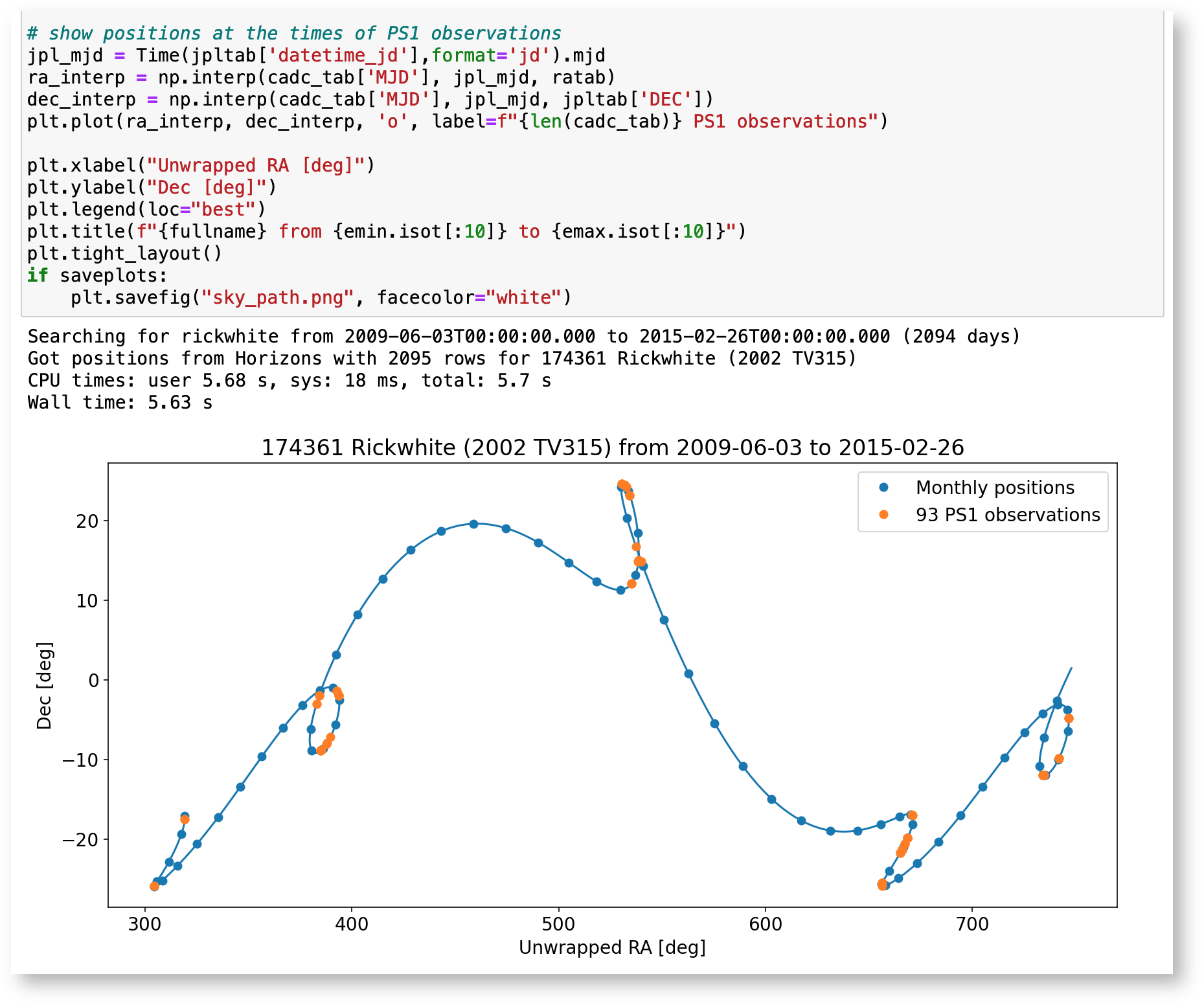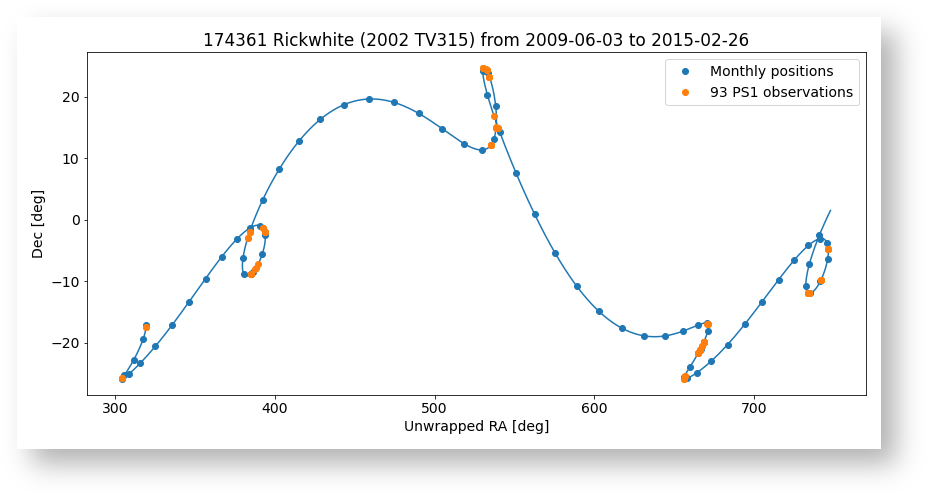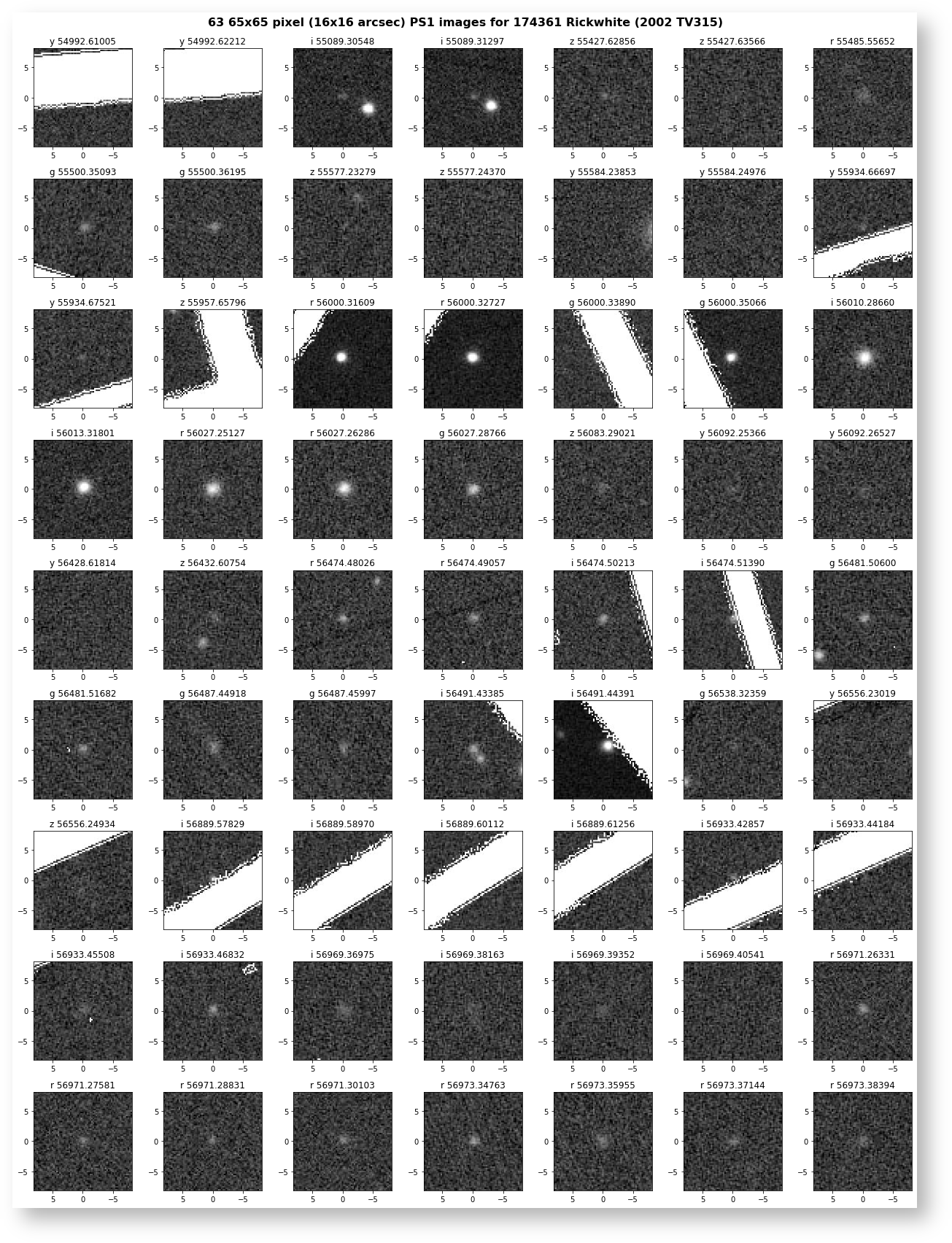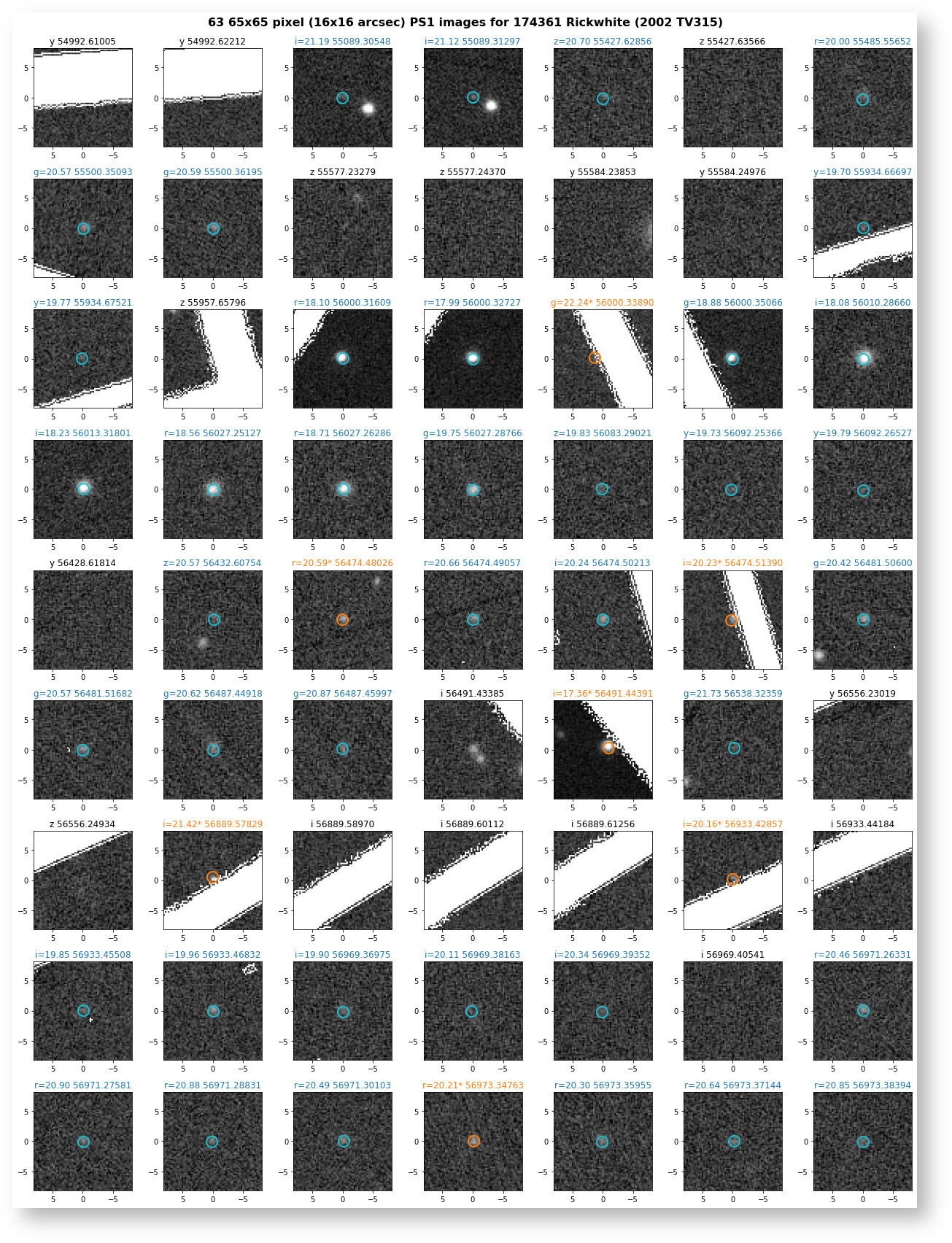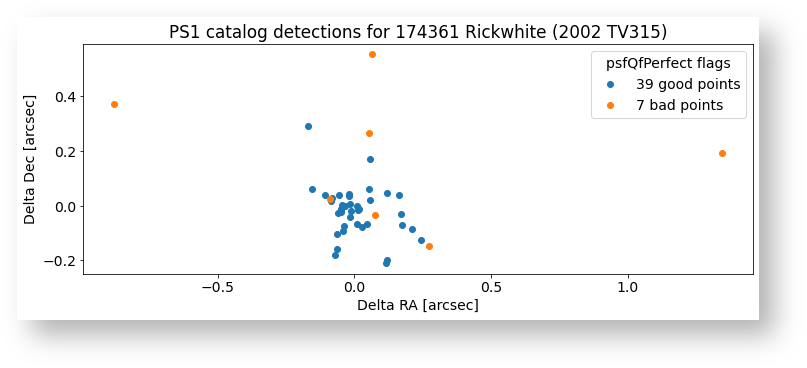The tools provided to search for Pan-STARRS1 catalog and to extract images rely on the target positions on the sky. For solar system targets, the position changes with time. This page describes an effective approach for using the known orbits of solar system targets to search both the images and catalogs for PS1 measurements. A Python Jupyter notebook shows an example, including all the necessary code.
Overview
The sample notebook searches for Pan-STARRS1 catalog detections of the asteroid 174361 Rickwhite (2002 TV315). The Canadian Astronomy Data Centre (CADC) solar system image search API is used to get an initial list of PS1 observations. Then the JPL Horizons database is queried (using the astroquery.jplhorizons module) to get the position of the target as seen from the PS1 observatory on Mt Haleakala at the exact times of the PS1 observations. Those positions are passed to the PS1 CasJobs database where they are cross-matched with the PS1 detection catalog.
For asteroid rickwhite, there are 93 potential observations identified. Image cutouts are extracted from all those images using the PS1 Image Cutout Service. 30 images are blank because the object position falls in a chip gap or off the edge of the camera. The 63 remaining images are displayed and show that the positions are indeed correct. Some of the non-blank images have gaps or other artifacts at the object position.
Using the CasJobs interface to the PS1 catalog, the PS1 catalog positions for the good images are queried and all matching detections from those images are returned. 46 matches are found for the 63 images.
The time for all queries is about 1 minute (including the time to extract the image cutouts and to query the MAST database). The time and number of results returned should be roughly similar for most other solar system objects in the PS1 observing area.
Results
Here are some plots from the notebook showing the results. The PS1 survey has typically 10 epochs for each of the five filters (grizy) spread over the 5 years of observing. Those images will randomly include a moving object if they happen to be pointing in the right direction. The number of images with data will vary from object to object, but about 50 epochs will be the expected average.
The notebook extracts the path the object followed during the PS1 survey (a period of about 5 years). Here is a plot of the path plus the positions of PS1 observations.
Here are the 63 images that include asteroid Rickwhite. These are 65x65 pixel cutouts (about 16x16 arcsec) centered on the ephemeris position. Some images fall in gaps between the chips, but for the other cases there is usually a faint object present at the expected location. The title on each plot gives the filter and MJD date for the observation.
Matching the list of object positions with the PS1 catalog finds 46 detections. Here is another plot of the images with the PS1 source position overplotted. Cases where there are bad pixels overlapping the object (as indicated by the psQfPerfect column) are marked in orange. Good measurements are marked in blue.
The third plot compares the positions from the PS1 catalog with the ephemeris positions from the JPL Horizons system. Again the objects with poorer quality data are plotted in orange. The 39 objects having good data agree very well with the predicted positions.
It is noticeable that the brightness varies over a wide range in the images. Some of that is due to the different PS1 filters, but most of the variation is the result of changes in the distance between the Earth and the asteroid (it looks much fainter when farther away) and changes in the illumination fraction of the visible source. Asteroids have phases like the moon: the "full moon" view is brighter than a "half moon" or "crescent" view where the asteroid is only partly illuminated. The final plot shows the light curve from the PS1 data. The top panel shows the magnitude, with different filters shown in different colors. The asteroid varies in brightness by 3.5 magnitudes (a factor of 25). The plot shows the brightest measurements (with the smallest magnitudes) at the top.
The bottom panel shows the magnitudes adjusted using the asteroid's distance and illumination fraction (both quantities that are included in the JPL Horizons results). That removes much of the variation in apparent brightness, leaving behind other intrinsic factors such as the color (the asteroid is fainted in the blue g band and brightest in the i band) and other sources such as surface features. A more sophisticated model would be required to extract astrophysically interesting results from these observations.

